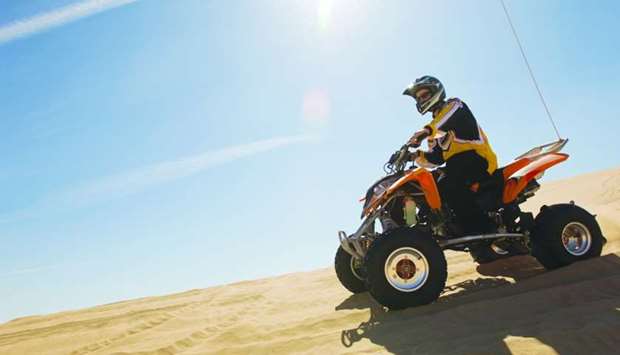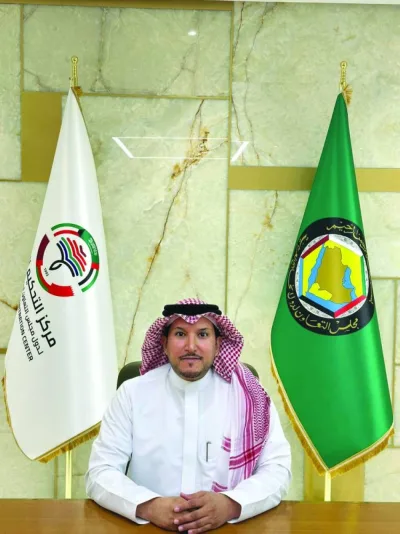According to a report that combines data from Al Wakra Hospital’s Emergency Department, Hamad Medical Corporation’s (HMC) Ambulance Service, and the Hamad Trauma Center, during each year between 2010 and 2017 the Qatar Trauma Registry recorded a 25% annual increase in the number of ATV-related injury victims admitted to the National Trauma Center. The greatest increase was child victims, which made up 40% of those injured. There was also a 34% increase in the number of female victims.
“Each year more than 75 ATV-related injury victims sustain severe injuries to their head, chest, extremities, and abdomen. These injuries are severe enough to require surgery or ICU admission. Children and females are most at risk of injury because they often do not have the necessary weight and strength to adequately control an ATV moving at high speed. For these reasons, the American Academy of Orthopedic Surgeons does not recommend that children younger than 12 years of age operate ATVs,” says Dr Rafael Consunji, director of the HIPP.

Dr Sadriya al-Kohji, National Health Strategy Lead for Children and Adolescent Health.
Al Wakra Hospital’s Emergency Department receives between 35 and 40 patients each year with ATV-related injuries. The most commonly injured parts of the body are the arms and head, with most victims of ATV accidents having abrasions on their chest, arms, legs, and back. Dr Consunji says it is strongly recommended that all ATV drivers, and passengers, are fully clothed, wearing goggles, gloves, and boots, and using a helmet every time they operate an ATV.
One-third of the victims of ATV accidents are children under 18 years of age, with around 40% having been injured while riding as passengers. Dr Consunji says it is important to remember that ATVs are designed for only one user.
“ATVs are not designed to be used for transporting passengers and control of the vehicle is made more difficult with a passenger on board. Riding with or as a passenger increases the chance that weight imbalance and instability will occur. Weight imbalance and instability are common causes of crashes and rollovers,” said Dr Consunji.
He says ATV’s are heavy, complex machines that most children are not developmentally capable of safely operating. Dr Consunji says the size, power, and weight of an ATV requires complex decision-making, impulse control, and strength, which are not present in young children.
“December, which is traditionally the peak of the camping season, is when Hamad Trauma Center begins to see more patients who are injured while riding ATVs,” says Dr Consunji. “Most of the patients we see with ATV injuries are youths between the ages of 12 and 29.”
Representatives from the Hamad Trauma Center, Al Wakra Hospital, and the Ambulance Service all agree that driving an ATV in Qatar should not be risky. They agree that there are clear lessons that can be learned from the experiences of the victims of ATV-related accidents and say it is the responsibility of all to apply these lessons.
Other safe camping recommendations include ensuring tents are made of materials that are resistant to fire, heat, and cold, there is a distance of at least five meters between them and cooking areas and fire-pits are placed away from the tents. Smoking in areas where fires could start should also be avoided. Portable propane stoves should be turned off when not in use, fuel canisters should be stored safely, and safety equipment like fire extinguishers, fire blankets, and first-aid kits should be easily and readily accessible. It is also recommended to keep a close eye on the activities of young children.
Dr Sadriya al-Kohji, National Health Strategy Lead for Children and Adolescent Health, agrees it is important to highlight the risks of unsafe ATV use. Dr al-Kohji, who is also Head of Child and Adolescent Health at the Primary Health Care Corporation (PHCC), said that organisation launched an adolescent-friendly health service at a number of its health centers two years ago. She said the PHCC’s efforts to prevent and manage identified risk factors, such as accidents, non-communicable diseases, risky behaviours, mental health, and adolescent reproductive health, align with the National Health Strategy 2018-2022 aim to prioritise and empower children and adolescents.
“The National Health Strategy 2018-2022 has identified children and adolescents as a key priority area and as such is committed to improving the health and well-being of children and adolescents in Qatar. Through the National Health Strategy, there will be a focus on developing key initiatives and strategies to ensure safety and reduce high-risk behaviours among children and adolescents. This will be achieved through specific policies, regulations, and awareness programmes targeted at parents, children, and adolescents which will address issues such as the risk of ATV-related injury and health literacy overall,” said Dr al-Kohji.
Last year HMC officially launched the Qatar Trauma Registry, the first and only national trauma registry in the Arab world. Through the Qatar Trauma Registry, clinicians and other public health officials have access to the data needed to make better decisions to reduce trauma incidents in the country.

ATV’s are heavy, complex machines that most children are not developmentally capable of safely operating.
With the winter months approaching and camping season having officially begun, the Hamad Trauma Center’s Hamad Injury Prevention Program (HIPP) is warning about the risks of unsafe ATV use.


